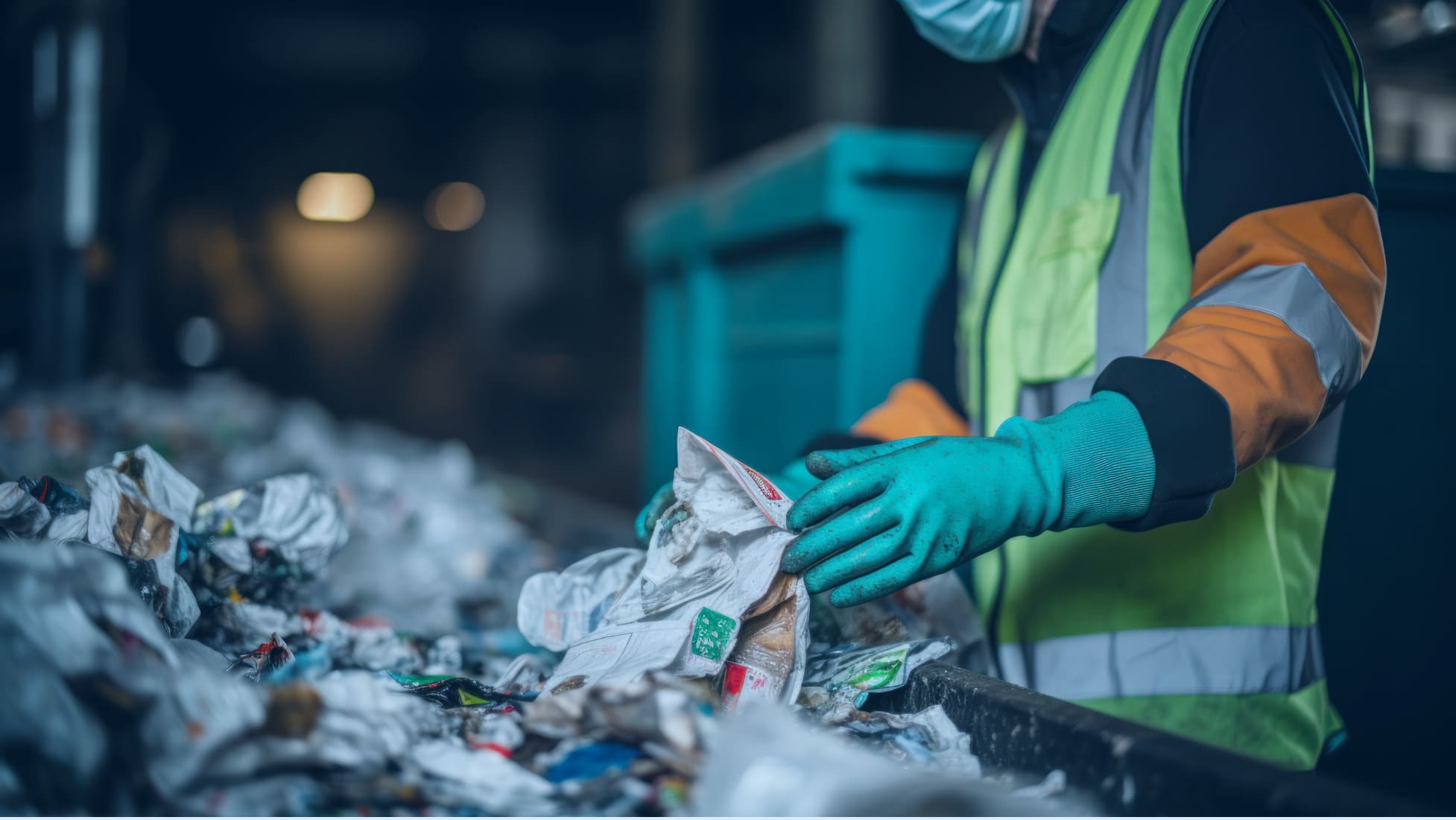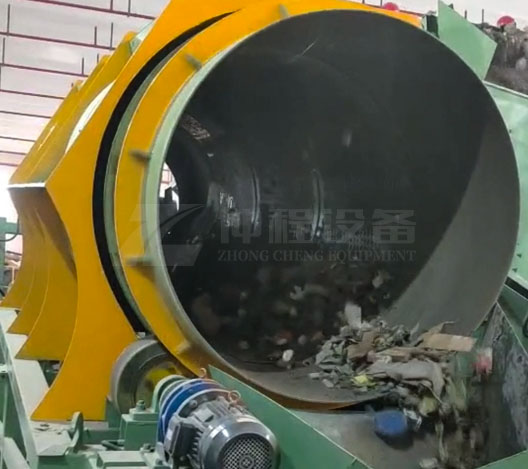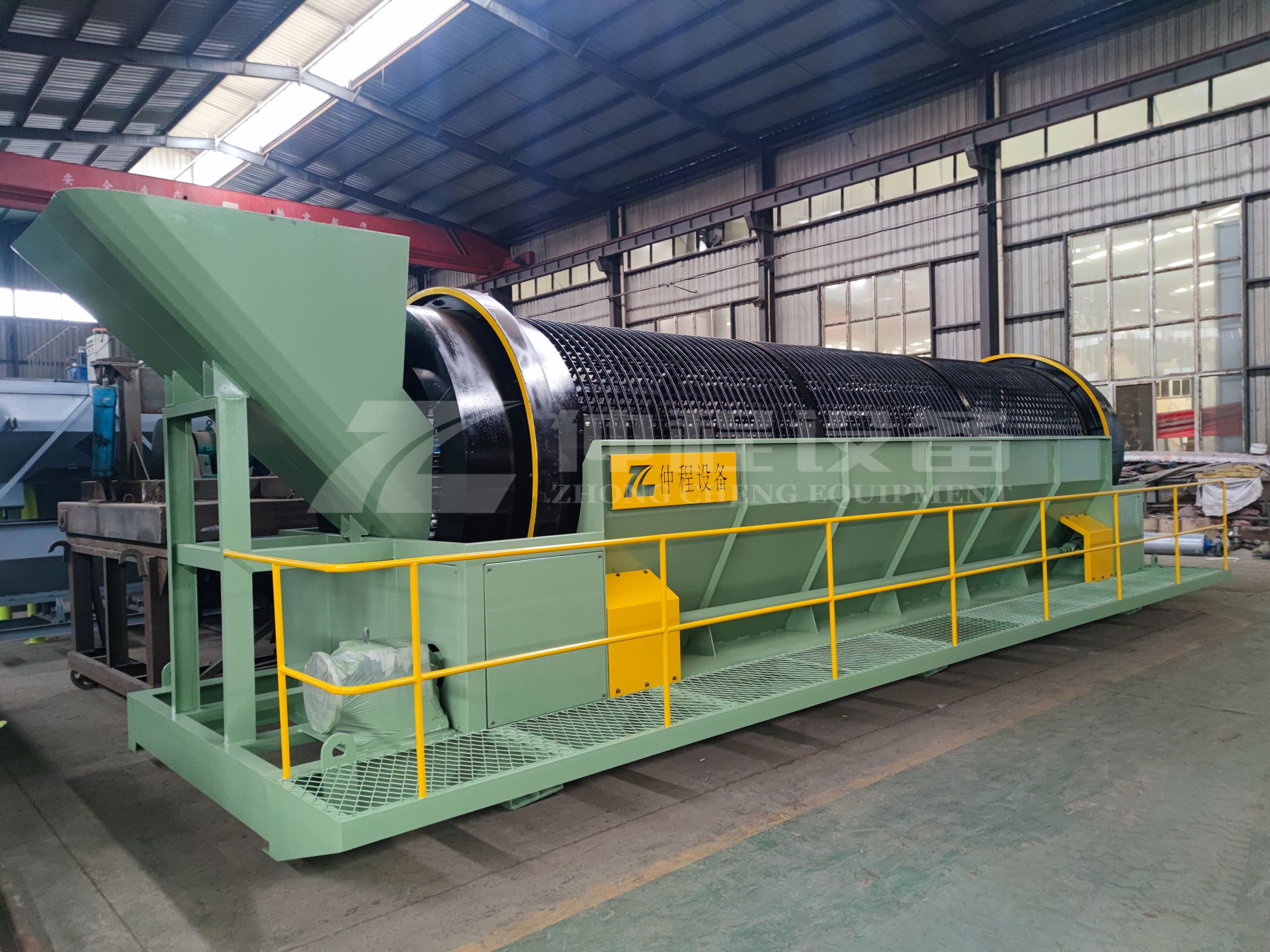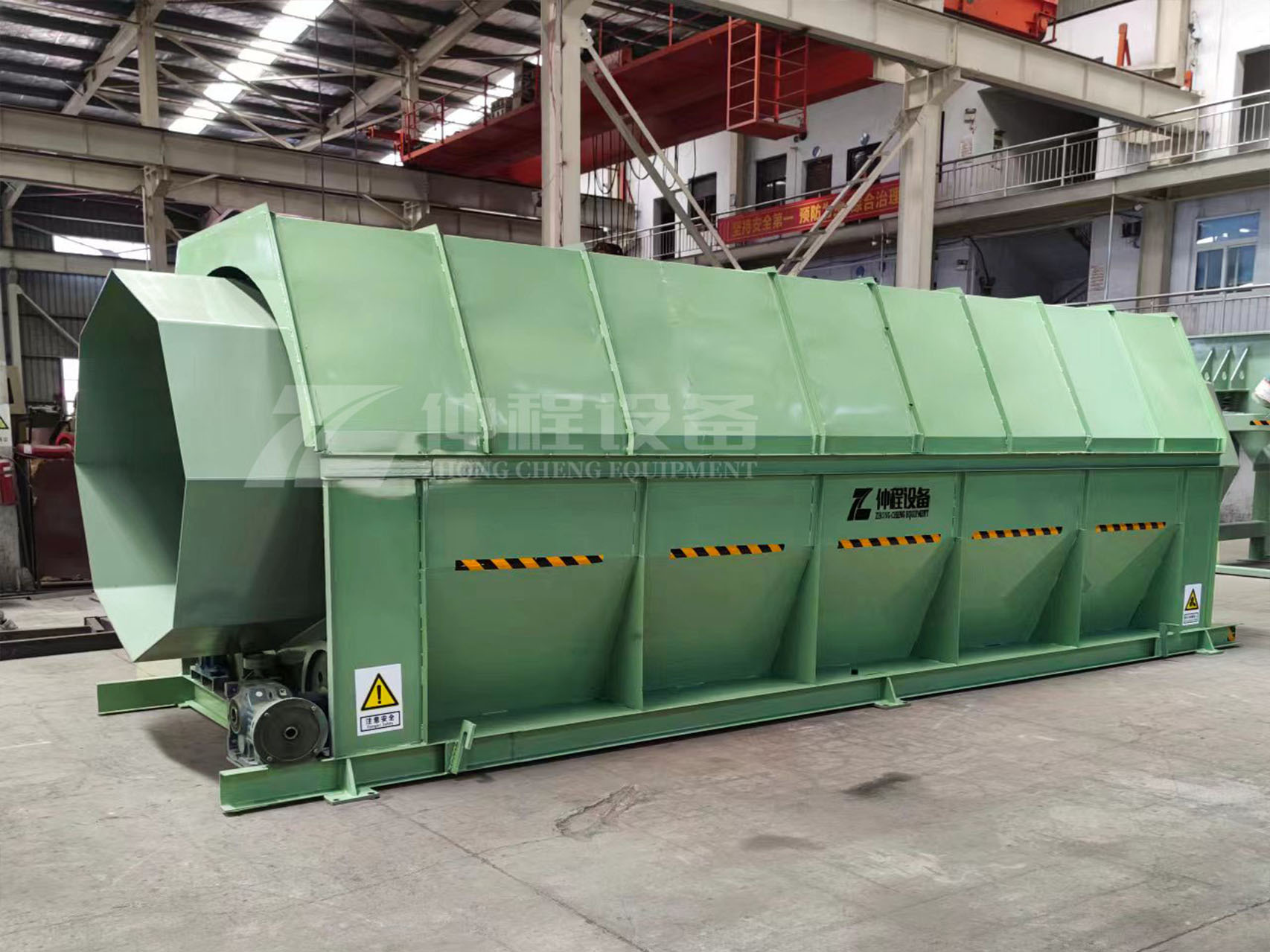Trommel Screens for Municipal Solid Waste (MSW)
The growing global population and increased urbanization have led to a surge in the amount of waste generated by cities and municipalities. Municipal Solid Waste (MSW) consists of everyday items discarded by households, businesses, and institutions, including everything from organic waste and recyclables to non-recyclable trash. As the need to efficiently manage waste and promote recycling becomes more pressing, trommel screens have emerged as a crucial component in MSW waste sorting machines. These machines offer an effective and efficient solution for sorting various materials found in MSW, helping reduce landfill waste and improve recycling rates.
In this article, we will delve into the working principles of trommel screens in MSW sorting, the environmental and operational benefits they offer, and how manufacturers are designing advanced waste sorting machines to handle the complexities of municipal waste.

What is Municipal Solid Waste (MSW)?
Municipal Solid Waste (MSW) refers to the waste generated by households, commercial establishments, and institutions in urban areas. This waste is a mixture of various materials, including:
- Organic waste (food scraps, yard trimmings)
- Recyclables (paper, cardboard, plastic, glass, metals)
- Non-recyclables (used packaging, textiles, certain plastics)
- Hazardous materials (batteries, electronics)
Managing MSW presents unique challenges due to the variety of waste types and their varying sizes, shapes, and compositions. Without efficient sorting, much of the waste ends up in landfills, contributing to environmental degradation, greenhouse gas emissions, and resource depletion.
The Role of Trommel Screens in MSW Sorting
A trommel screen is a rotating cylindrical drum with perforated or mesh walls that separates materials based on their size. Trommel screens play a vital role in MSW sorting by helping segregate different types of waste, such as organics, recyclables, and non-recyclables. They enable the efficient processing of large volumes of mixed waste, ensuring that valuable materials are recovered while minimizing the amount of waste that ends up in landfills.
Trommel screens are often used as part of a broader waste sorting system, which may include additional machines like ballistic separators, eddy current separators, and optical sorting devices. Together, these technologies form a comprehensive waste management solution that maximizes recycling rates and reduces environmental impact.

How Does a Trommel Screen for MSW Work?
The operation of a trommel screen in an MSW sorting facility is based on the simple yet effective principle of material separation by size. Here’s how it works:
Feeding the Waste Material
MSW, a mixture of organic waste, recyclables, and non-recyclables, is first fed into the infeed hopper of the trommel screen. The hopper is designed to evenly distribute the waste into the rotating drum, ensuring smooth and efficient separation.
Rotation and Agitation
Inside the trommel screen, the rotating cylindrical drum begins to move, causing the waste materials to tumble and mix. As the waste is agitated, smaller particles, such as organic matter (food waste, yard trimmings) and fine debris, fall through the perforated walls of the drum. The larger materials, such as plastics, metals, and glass, continue to move through the drum.
Separation of Materials
The key feature of a trommel screen is its ability to separate materials by size. As the drum rotates, different materials are sorted based on their dimensions. Smaller materials fall through the holes in the drum, while larger materials remain inside and move to the discharge chute for further sorting.
This initial separation helps streamline the rest of the sorting process, as organic waste and recyclables can be further processed in separate streams. Trommel screens can be customized with different screen sizes to target specific waste types, improving overall efficiency.
Discharge of Separated Materials
After the separation process, the trommel screen discharges the materials through various chutes. Finer materials like compostable organics may be collected and sent to composting facilities, while recyclables like plastics, metals, and glass are directed to their respective recycling processes. Non-recyclable materials that cannot be further processed are typically sent to landfills or waste-to-energy facilities.
Integration with Other Sorting Technologies
Trommel screens are often used in combination with other sorting machines, such as magnetic separators (for metals), ballistic separators (for separating 2D and 3D materials), and optical sorters (for sorting plastics and paper by type). This integration ensures that the various components of MSW are sorted with a high degree of accuracy, maximizing recycling rates and minimizing contamination.

Benefits of Trommel Screens in MSW Sorting
The use of trommel screens in MSW sorting offers numerous advantages, both for waste management facilities and the environment.
Efficient Separation of Mixed Waste
One of the main advantages of trommel screens is their ability to efficiently separate mixed waste materials based on size. By sorting materials into different categories (organics, recyclables, non-recyclables), trommel screens make it easier for waste management facilities to process large volumes of MSW. This improved efficiency translates to faster processing times and higher throughput.
Reduction in Landfill Waste
By separating recyclable and organic materials from the general waste stream, trommel screens help reduce the amount of waste that ends up in landfills. This is critical in reducing the environmental impact of waste management. Diverting organic waste from landfills, for example, reduces methane emissions, a potent greenhouse gas that contributes to climate change.
Improved Recycling Rates
Trommel screens play a key role in improving recycling rates by ensuring that valuable materials such as metals, plastics, and glass are recovered from the waste stream. By separating these recyclables from non-recyclable materials, trommel screens contribute to the circular economy, where materials are reused and repurposed instead of being discarded.
Enhanced Composting
In many waste management facilities, organic waste is separated from other materials using trommel screens and then sent to composting facilities. Composting organic waste not only reduces landfill waste but also produces nutrient-rich compost that can be used in agriculture, landscaping, and gardening, promoting sustainable practices.
Energy Efficiency
Modern trommel screens are designed with energy efficiency in mind. By optimizing the motor and drive systems, manufacturers have developed machines that consume less power while maintaining high levels of performance. This not only reduces operating costs for waste management facilities but also contributes to a lower carbon footprint.

Manufacturing Trommel Screens for MSW Sorting
The increasing demand for efficient waste management solutions has led to advancements in the manufacturing of trommel screens. Factories producing these machines must consider several key factors to meet the needs of the MSW sorting industry.
Durability and Robust Design
Trommel screens used in MSW sorting must be built to withstand the rigors of processing large volumes of mixed waste. This requires the use of durable, wear-resistant materials for the drum, frame, and mesh. Manufacturers often use heavy-duty steel for the construction of these machines to ensure long-lasting performance, even in harsh conditions.
Customizable Designs
Waste management facilities handle a variety of waste streams, from household trash to construction debris. Manufacturers must offer customizable trommel screen designs to accommodate different screen sizes, drum lengths, and processing capacities. This flexibility allows waste sorting plants to adapt their equipment to the specific types of waste they process.
Technological Integration
To meet the growing need for more efficient waste sorting, manufacturers are integrating advanced technologies into trommel screens. Features such as automated controls, variable speed drives, and real-time monitoring systems help optimize the sorting process and reduce the need for manual intervention. Additionally, integrating sensors and other sorting technologies improves the overall efficiency and accuracy of the waste sorting process.
Conclusion
Trommel screens are an indispensable component of Municipal Solid Waste (MSW) sorting systems, offering an efficient and cost-effective solution for separating mixed waste materials. By enabling the separation of organic waste, recyclables, and non-recyclables, trommel screens contribute to the reduction of landfill waste, improved recycling rates, and enhanced environmental sustainability. Manufacturers are continually innovating to create durable, energy-efficient, and customizable trommel screens that meet the demands of modern waste management.
As cities and municipalities face increasing pressure to manage waste more sustainably, the role of trommel screens in MSW sorting will only become more important. By improving the efficiency of waste sorting processes, these machines help pave the way toward a more sustainable future, where recycling and resource conservation take center stage.
-
 Trommel screenTrommel screen, also known as drum screens, are widely used in various industries for sorting and separating materials.Get Quote
Trommel screenTrommel screen, also known as drum screens, are widely used in various industries for sorting and separating materials.Get Quote -
 Crop straw double shaft shreddApplications:Biomass Energy Production: Shredded straw can be used as a feedstock for bioenergy plants to produce electricity or heat.Livestock Feed: Reduced-si...Get Quote
Crop straw double shaft shreddApplications:Biomass Energy Production: Shredded straw can be used as a feedstock for bioenergy plants to produce electricity or heat.Livestock Feed: Reduced-si...Get Quote -
 Zhongcheng Air Drum SeparatorAir drum separators effectively separate lightweight materials (e.g., plastics, paper) from heavier materials (e.g., metals, glass). This high efficiency is cru...Get Quote
Zhongcheng Air Drum SeparatorAir drum separators effectively separate lightweight materials (e.g., plastics, paper) from heavier materials (e.g., metals, glass). This high efficiency is cru...Get Quote
-
2023-01-12Waste FeederWaste feeder was specially designed to optimize municipal solid waste sorting systems. The Drum Feeder ensures that your sorting system, baler or shredder has a...
-
2023-01-18RDF Making MachineRDF (Refuse Derived Fuel) making machine is a specialized equipment used in waste management and energy recovery processes. Its primary function is to convert v...
-
2024-06-05Can the Angle of the Ballistic Separator Be Adjusted?Ballistic separator is a type of mechanical sorting device used primarily in the recycling industry to separate materials based on their physical properties. It...
-
2024-06-20Wind Separator Technology for Lightweight Materials in Urban Solid Wastewind separator, also known as air separation, is a sophisticated and efficient method of sorting that utilizes air as the separating medium.
-
2024-08-22Medical waste shredderWorking Principle:Feeding Mechanism: Medical waste is fed into the shredder through a hopper or chute. The feeding mechanism ensures that the waste is introduce...



